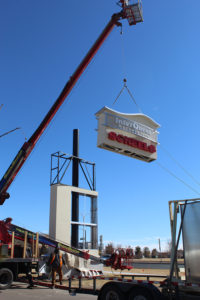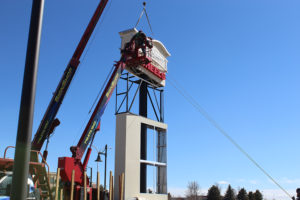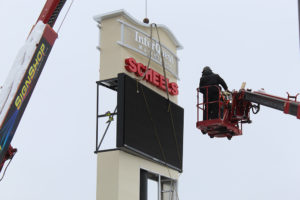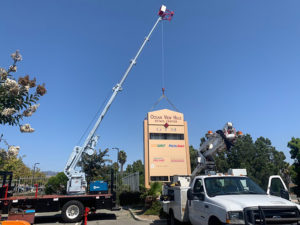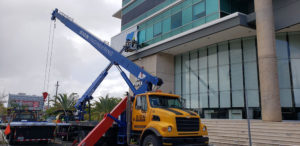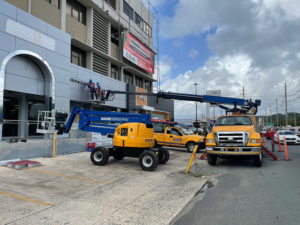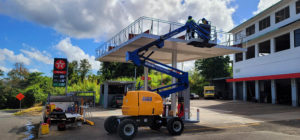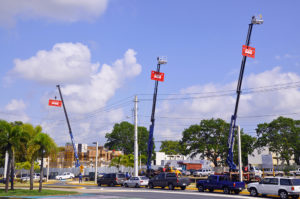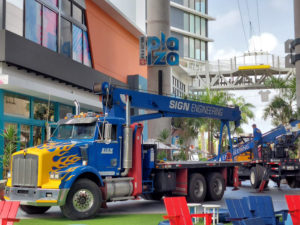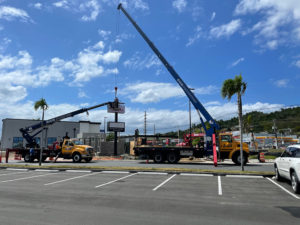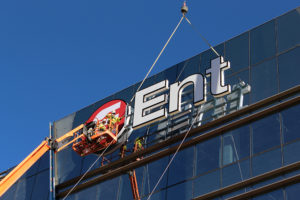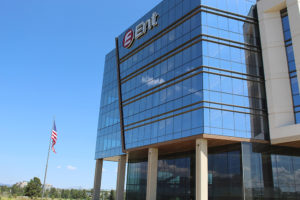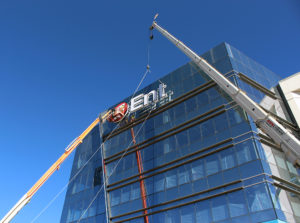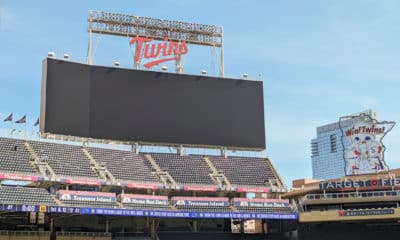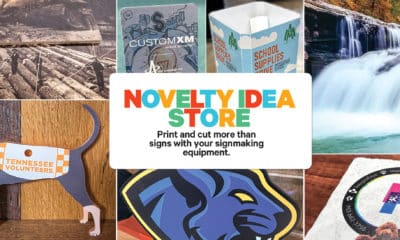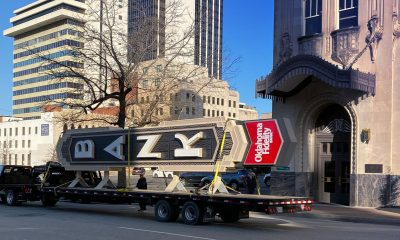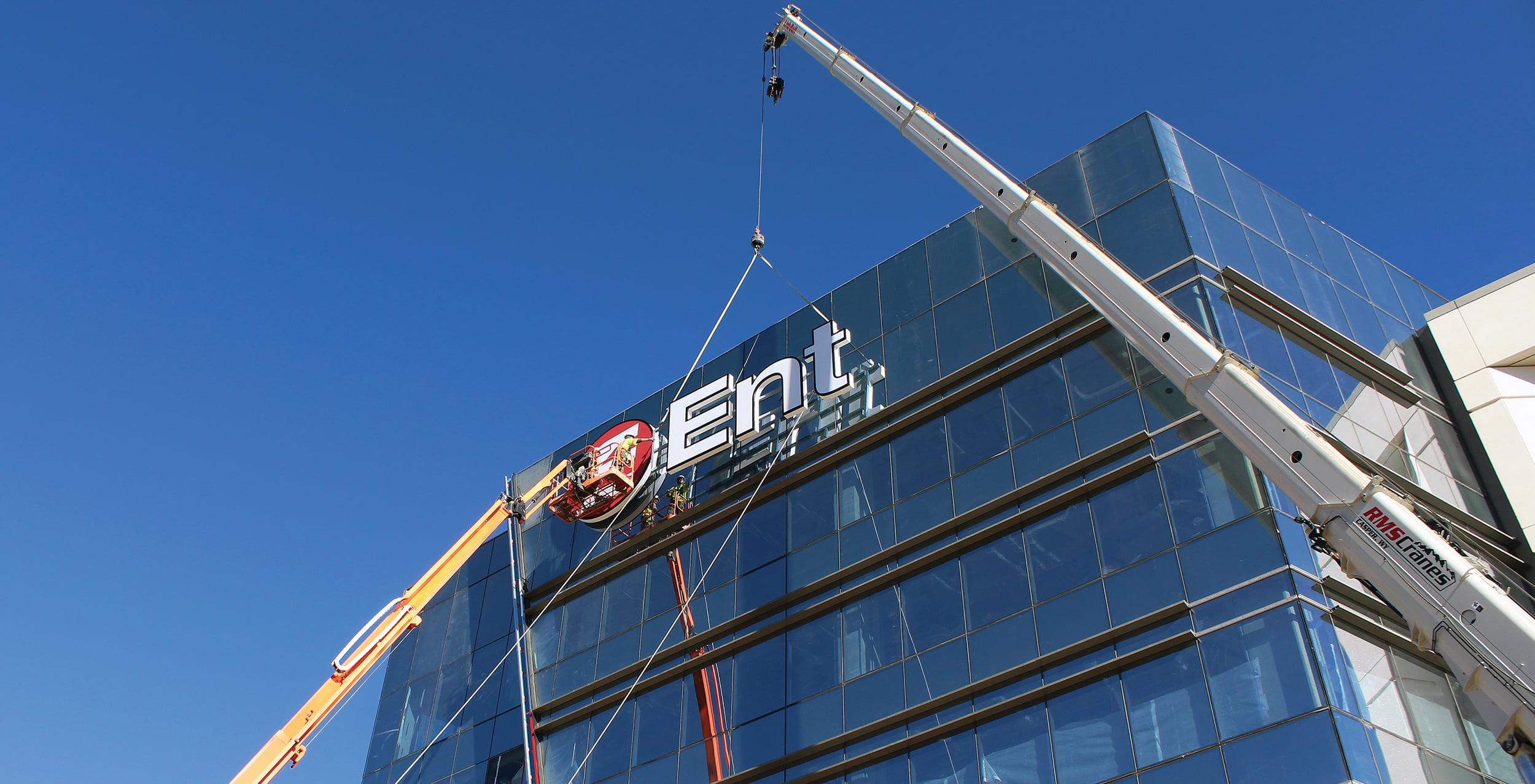
Power Lifting
Crane truck fleets, the business they bring in, getting certified and more.
Published
2 years agoon
IN THE BEGINNING, recalls Harold Pedley, Sign Engineering (SE; San Juan, PR) — referring to this company’s start in 1990 — “everything was a challenge! What truck/crane to buy? How to pay/finance it? Who was going to drive/handle it?” and more were among their many concerns.
Even five years ago, [anyone] could rent a crane, says Frank Murch, Signs for San Diego (S4SD; San Marcos, CA). Now one needs to be OSHA certified through the National Commission for the Certification of Crane Operators Foundation (NCCCO, Philadelphia).
Amid the many recent changes, Brain Squad members Pedley, Murch and Louis DeSantis, Sign Shop Illuminated (SSI; Colorado Springs, CO) share their thoughts and experiences here on contemporary crane installations.
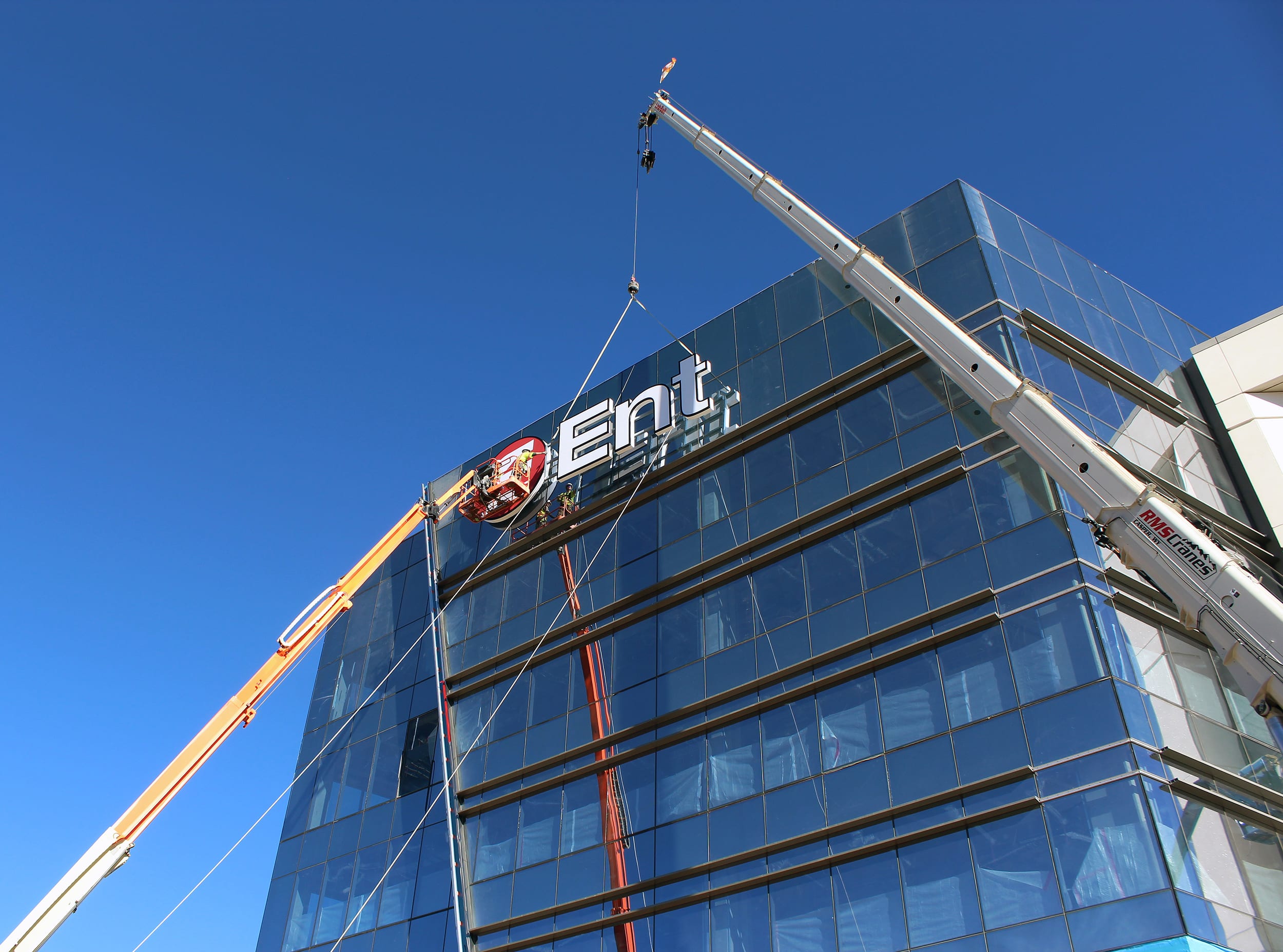
This install by Sign Shop Illuminated was unique as the sign had to be installed on the windows and required specific anchoring points and custom bracketing. Due to the height, additional cranes and a lift plan were critical.
For those of you scoring at home, here are the players and their lineups:
- Sign Engineering (SE), San Juan, PR
- 35-ft. Versalift — Two Ford E350 enclosed vans for service work.
- 40-ft. Elliott — Two
- 43-ft. Elliott — Two
- 55-ft. Elliott — Three
- 62-ft. Manitex
- 70-ft.Versalift (a Ford F550 two-person basket with small outriggers dedicated to service work).
- 85-ft. Elliott — Four
- 22101 Manitex — Two
- JLG 450AJ (articulating boom) — Three
- JLG 3246 (scissor lift) — Four, plus many additional pickup and flatbed trucks.
- Sign Shop Illuminated (SSI), Colorado Springs, CO
- Elliott L60
- Altec LS60
- Manitex SC62
- Wilkie 52XLR
- Elliott L36
- Dur-A-Lift DTAX44
- Signs for San Diego (S4SD), San Marcos, CA
- Garland — Over time, have had four: three 60-ft. cranes and one 80-ft. crane.
- Currently using one bucket and one crane.
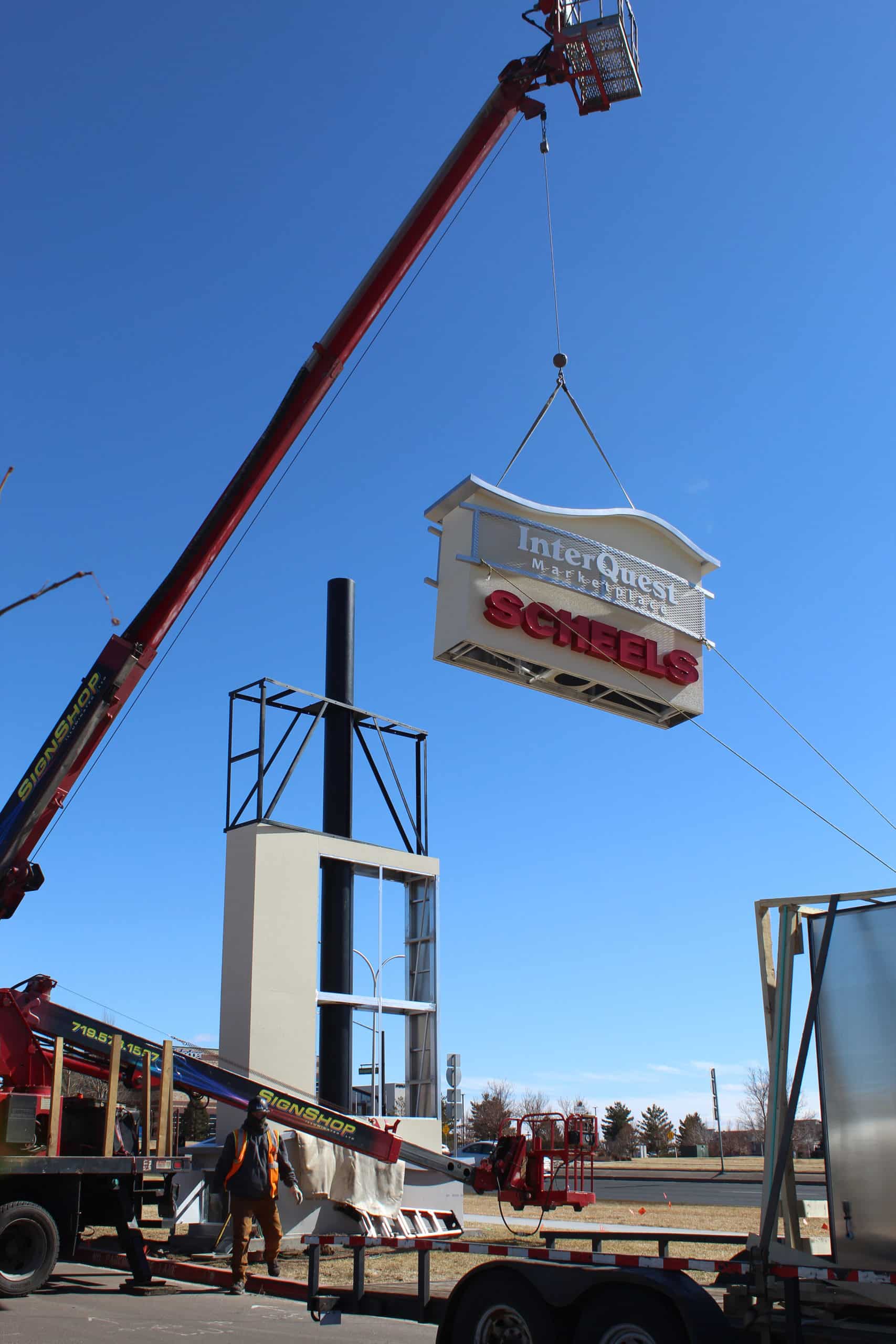
KEEPING
CREWS BUSY
Over the years as SSI continued to grow their business from a single truck and an office employee with a few licenses within Colorado, to operating with project coordinators and permitting specialists, a full fabrication shop and six install/service trucks — along with holding licenses spanning Colorado, Wyoming and Utah — they had to rethink operations and procedures that became obsolete as capacity grew, DeSantis says. Changes such as implementing a calendar system that tracks every facet of work and is visible to the entire company, developing new electronic work orders, reconstructing and speeding up their estimating process, as well as many others have provided SSI the ability not only to schedule more work for their crews, but also to ensure they are producing work as efficiently as possible.
With a total of 120 employees and approximately 40-45 people in the field doing installation and service work, scheduling is critical for SE and they try very hard not to rush their installs, Pedley says. When forced to work in a tight time frame, the jobs are heavily supervised. SE has separate installation and service coordinators who handle their own crews, along with two dedicated field supervisors. The field crews start their days at 6 a.m., which helps avoid traffic, allows for work during cooler hours, and, if extra time is needed, allows them to stay on the job until finished. SE also does a lot of night or off-hour installs to avoid crowded conditions.
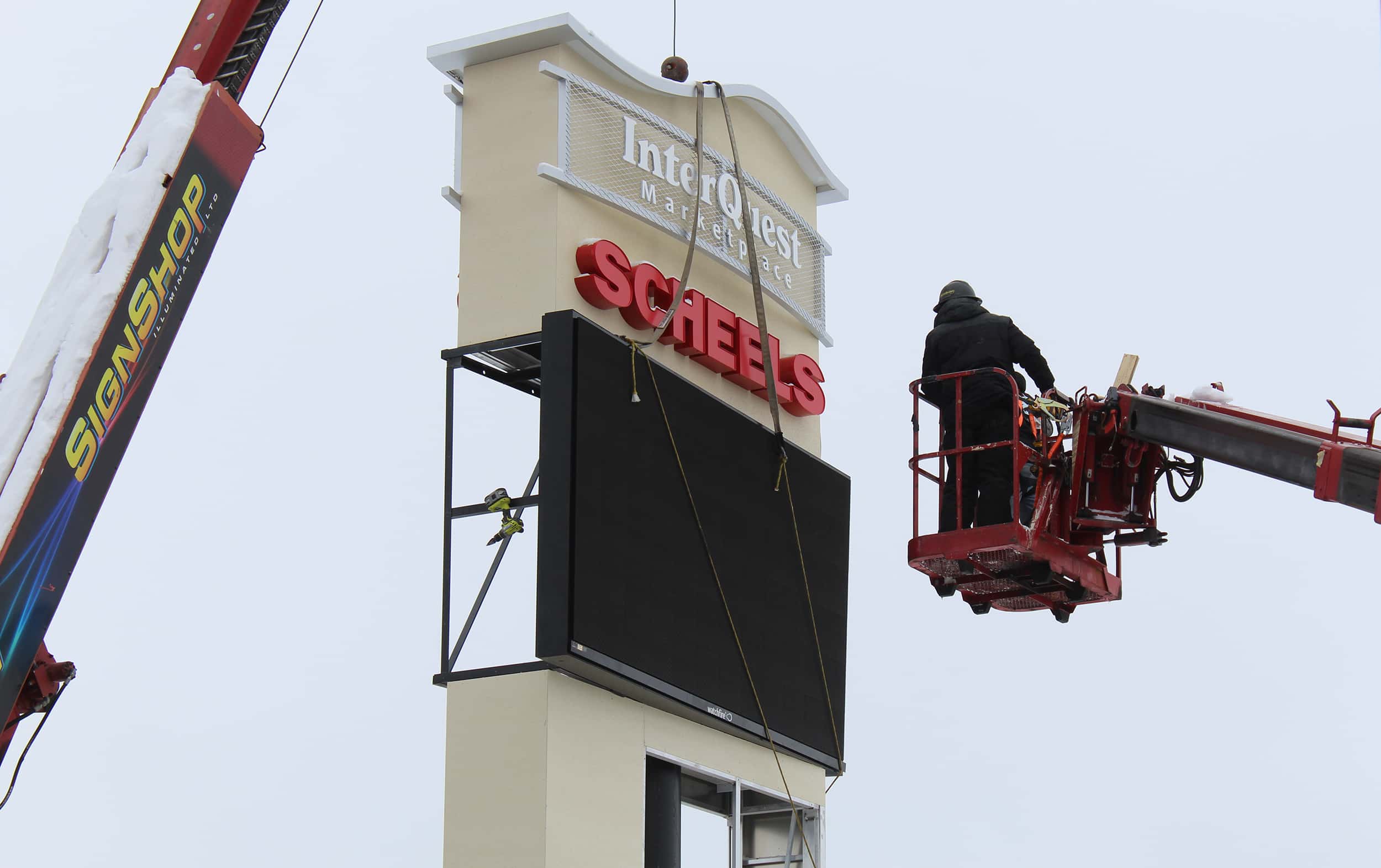
BEST THINGS
ABOUT CRANE INSTALLS
Installers are an interesting bunch, Murch says, adding they’re a “Jack of all trades, master of none.” Being an installer takes a special personality, he continues. They work with very limited supervision, are in unpredictable and unique situations and must figure out how to make the job work. At the same time, they are customer facing. “Many installers take great pride in being that final and very visual step of bringing and finishing the job,” Murch reports. “A lot of customers have praise for the installer, and I think many installers enjoy that position where they are the hero.”
“We get to work on the best aspects of the sign industry!” DeSantis of SSI says. “All high-profile projects that our guys get excited to work on showing their craft, almost always fall within the need for boom and crane trucks; it’s why we do this work.”
The best thing for SE is that the company does not have to depend on subcontractors, Pedley says. “We are in full control of our destiny! It is also great advertising!”
Amount of Business
Brain Squad members love sharing percentages with our readers! Below, Pedley, DeSantis and Murch, respectively, disclose the amount of their business driven by installations, as well as the split between outside/national company installs and their own.
Sign Engineering (SE)
- Revenue from installs: 25%
- Installs for national sign companies: 10% approx.
- Installs of own fabricated signs: 90% approx.
Sign Shop Illuminated (SSI)
- Revenue from installs: 60% approx.
- Installs of own fabricated signs: 30% approx.
Signs for San Diego (S4SD)
- Revenue from installs: 30% approx. is “contract install.” (Includes national companies and about 50% for local sign companies where S4SD manufactures and installs under local companies’ names.)
- Installs of own fabricated signs: 20%
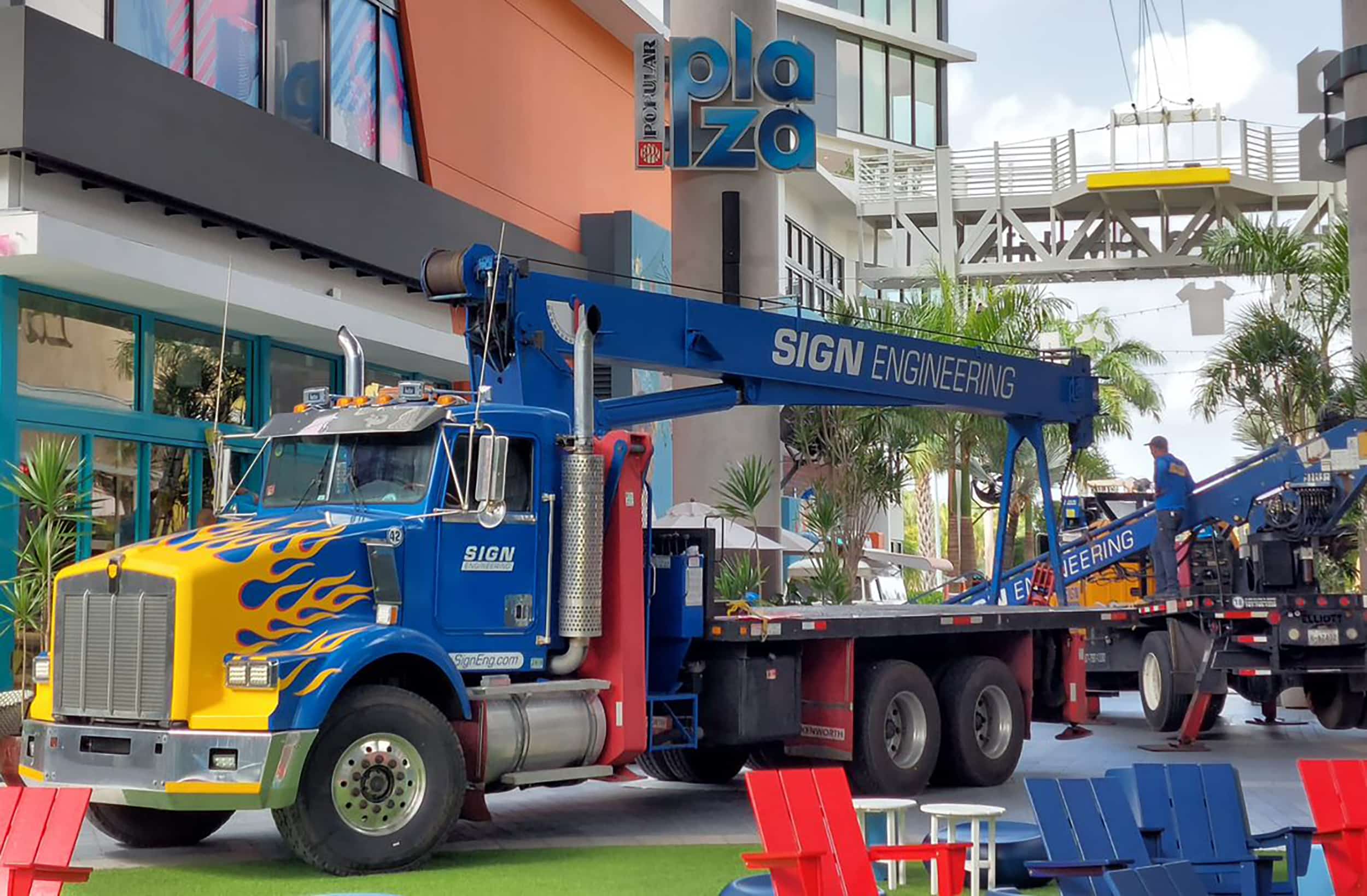
For Sign Engineering, the most interesting installs involve various crews with different types of equipment working together: work platforms (Elliott), lifting cranes (Manitex) and maybe a very large rented crane.
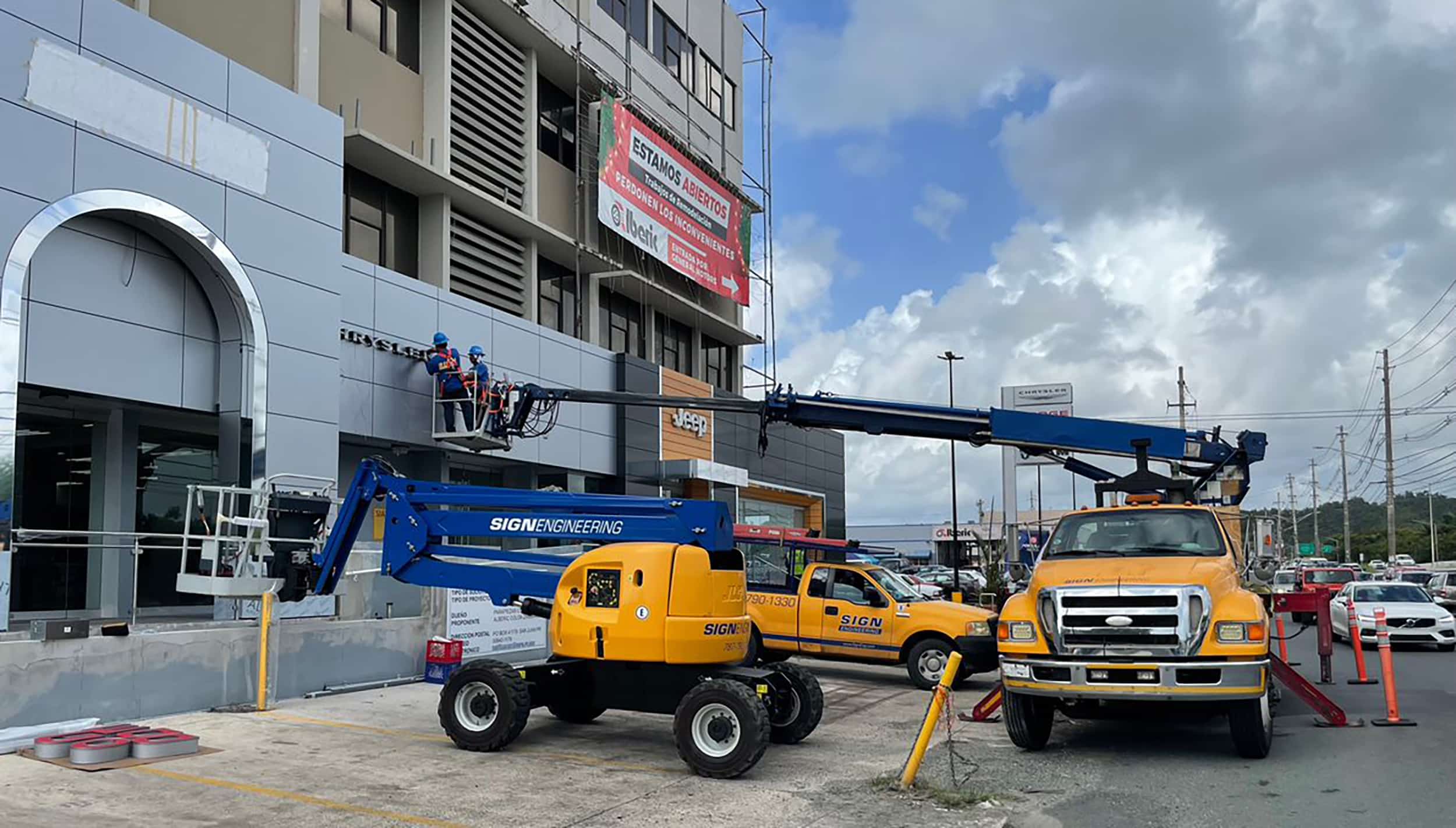
WORST THINGS
S4SD’s Murch judges a tie for the worst thing about crane installs. First, he says, OSHA has been cracking down on crane owners and users. “If OSHA finds a company using a crane without the required certification (NCCCO-certified swing or fixed cab), the fines can exceed $10,000 per incidence,” he says, adding that most sign companies are unaware of this change. Second, if there is an accident, hopefully insurance will cover the damage, but without the NCCCO certification the legal liabilities can run into the millions. Lack of this certification can be shown as negligence, Murch warns of this relatively recent legal development.
SSI’s worst thing is “whenever the wind decides to show up and delay a project,” DeSantis says, noting one particular instance — Ent Credit Union headquarters — one of the company’s more challenging if not its most stressful install to date due to the signage having to be lifted alongside the windows of a brand new building. “In this particular area of Colorado Springs, the wind can become extremely challenging to predict and work in,” he says.
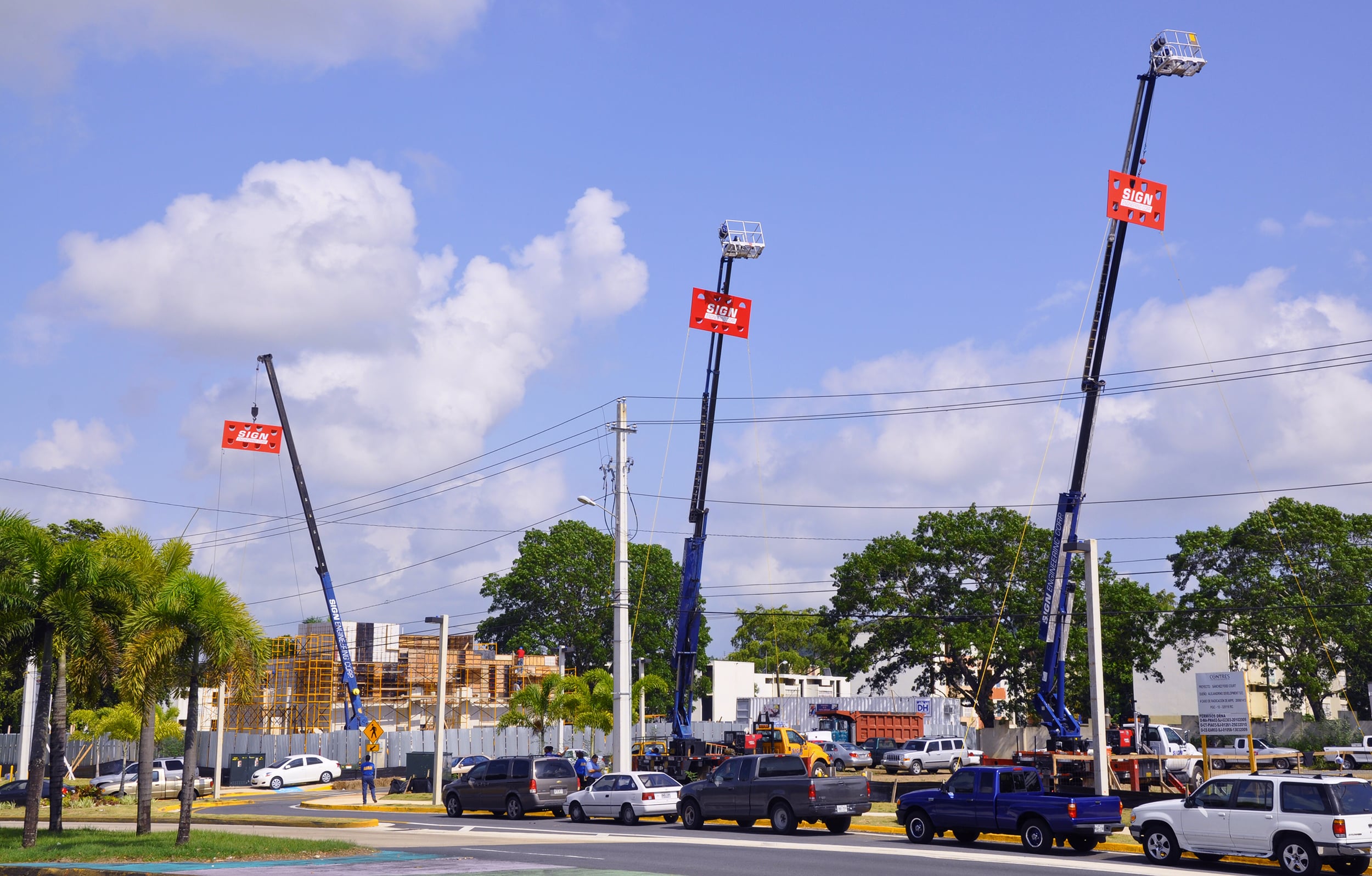
Pedley would not say there is not a bad side, “but … you do have to maintain your equipment and more importantly, you need to have excellent installers/operators that are highly trained and certified,” he says. If compelled to name a worst thing, it would be the cost of training and new certification for crane operators, which is considerable. “But, it does help to ensure that you are working safely and that does have a payback in many ways,” Pedley adds.
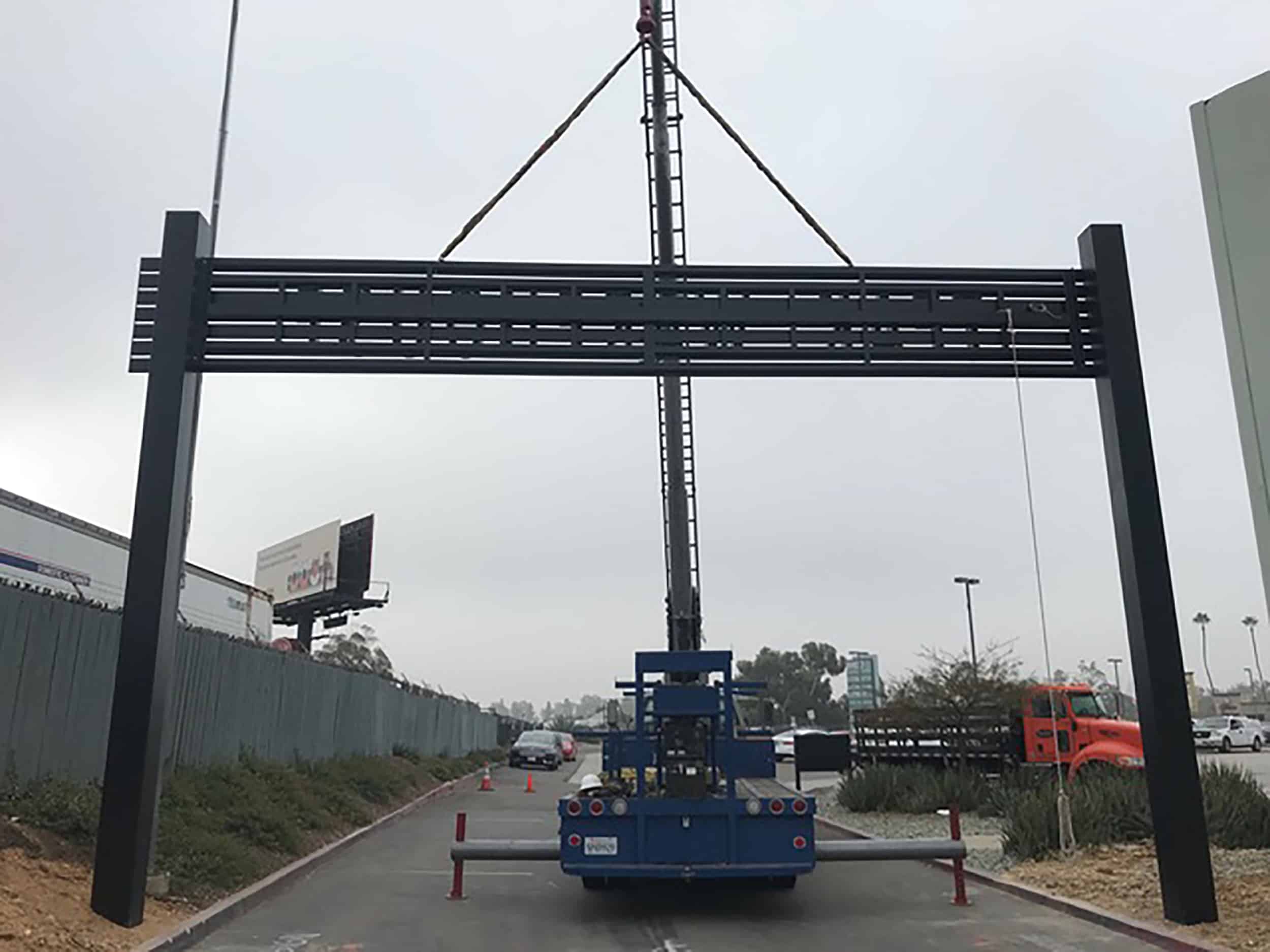
An example where Signs for San Diego used a crane to install a roadway arch, which allowed installers to get the poles up and inground, and to lift the arch itself up to be bolted in with a bucket truck.
ADVICE
FOR NEWBIES
To do crane installations, SSI’s DeSantis says, a sign company must have the talent to help produce the end results. “In our industry we have some of the most talented workers, yet we are not viewed within the construction industry with the respect I believe we deserve,” he says. Considering what is asked of installation crews — from excavation to electrical, along with hanging signs hundreds of feet in the air — it’s truly remarkable what they are able to accomplish, DeSantis says. “To get involved in this part of the sign world, ensure you invest in the right people to help you along the way.”
SE’s Pedley offers the following seven-point plan:
- Buy new equipment, even if you have to finance it.
- Standardize as much as possible for ease of service. Most of SE’s fleet are Fords with Elliotts.
- Maintain the equipment well, ideally with your own mechanic(s).
- Hire good people, train them thoroughly and pay them as well as you can.
- Assign a dedicated installer and helper to each vehicle and put their names on the door so they take “ownership.”
- Make your fleet look unique and consistent. It is great advertising and employees feel proud.
- When you need bigger (higher/stronger) equipment, rent it! Do not be cheap and overextend/push your equipment. It can be more expensive if you damage your crane and, most importantly, dangerous to personnel.
“If you want to get into crane-required installs, get the NCCCO certification first,” S4SD’s Murch says. Certification costs $2,000 to $4,000 and does two things: “You will know a lot more about cranes, what to buy, how to use [them] and what to look for,” he says. “And you can actually rent and use a crane. The NCCCO cert is the key to this capability; without it you are running huge legal risks.”
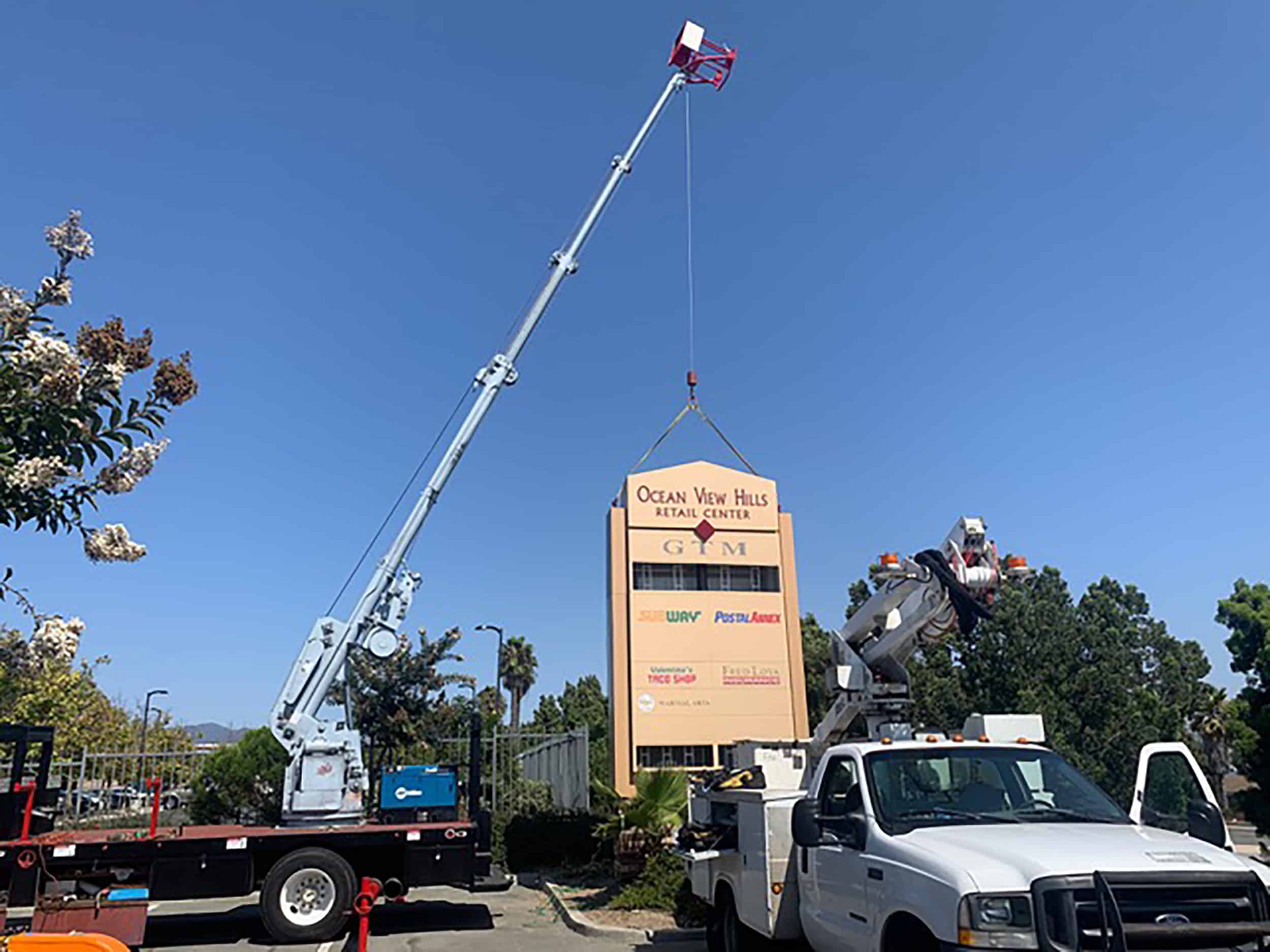
Having a crane increases a shop’s capabilities — a big escalation in the development of a sign company, Murch says. It also increases the required skill level of the installers using it. Regarding the maximums that do not require certification, he advises “60 ft. and 2,000 lbs. are not enough,” noting that cranes not requiring a Commercial Driver’s License (CDL) typically max out at 60 ft. and a certified crane operator is required for lift capacities over 2,000 lbs. “Both of these limitations will cap your company’s abilities and make you into an also-ran in the crane world,” Murch says. “If you are going to do this, go big and don’t settle for 60-ft. and 2,000-lb. limits.”
Get Certified

At the suggestion of S4SD’s Murch, we asked Willie J. Tubbs, president/CEO of Craneology Inc. (Perris, CA), for information and advice about getting NCCCO certified.
There are two basic types of certifications for telescopic boom cranes (the swing cab – TLL) and (the fixed cab – TSS), Tubbs explains. The swing cab has an operator’s cab that swings with the boom, and the fixed cab has operator stations, which are basically stationary platforms that do not swing with the boom. Some fixed cab telescopic boom cranes have stationary cabs instead of platforms that do not swing with the boom.
The major crane operation/safety-related issues that sign companies don’t know about are the requirements for qualified riggers and signal persons working with the crane operator, Tubbs says. The operators must also be qualified on the crane that they’re operating.
Craneology offers a certification course in Perris, CA, every month and can provide training and testing at the customer’s location if there are at least six candidates. For more information, including OSHA fact sheets for download, see signsofthetimes.com/092204.
PHOTO GALLERY (14 IMAGES)
Advertisement
Mark Kissling is Signs of the Times’ Editor-in-Chief. Contact him at mark.kissling@smartworkmedia.com.

SPONSORED VIDEO
Introducing the Sign Industry Podcast
The Sign Industry Podcast is a platform for every sign person out there — from the old-timers who bent neon and hand-lettered boats to those venturing into new technologies — we want to get their stories out for everyone to hear. Come join us and listen to stories, learn tricks or techniques, and get insights of what’s to come. We are the world’s second oldest profession. The folks who started the world’s oldest profession needed a sign.
You may like
INX Promotes Three to Vice President

6 Sports Venue Signs Deserving a Standing Ovation

Hiring Practices and Roles for Women in Sign Companies
Subscribe

Bulletins
Get the most important news and business ideas from Signs of the Times magazine's news bulletin.
Most Popular
-

 Tip Sheet3 days ago
Tip Sheet3 days agoAlways Brand Yourself and Wear Fewer Hats — Two of April’s Sign Tips
-

 Business Management1 week ago
Business Management1 week agoWhen Should Sign Companies Hire Salespeople or Fire Customers?
-

 Women in Signs2 weeks ago
Women in Signs2 weeks ago2024 Women in Signs Award Winners Excel in Diverse Roles
-

 Real Deal4 days ago
Real Deal4 days agoA Woman Sign Company Owner Confronts a Sexist Wholesaler
-

 Editor's Note1 week ago
Editor's Note1 week agoWhy We Still Need the Women in Signs Award
-

 Line Time2 weeks ago
Line Time2 weeks agoOne Less Thing to Do for Sign Customers
-

 Product Buying + Technology1 week ago
Product Buying + Technology1 week agoADA Signs and More Uses for Engraving Machines
-

 Women in Signs4 days ago
Women in Signs4 days ago2024 Women in Signs: Megan Bradley
